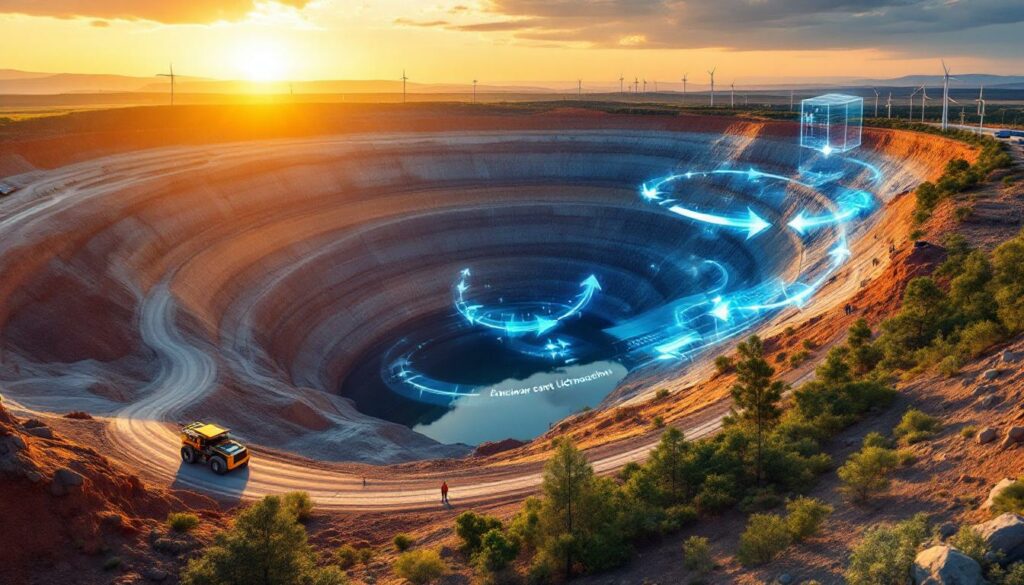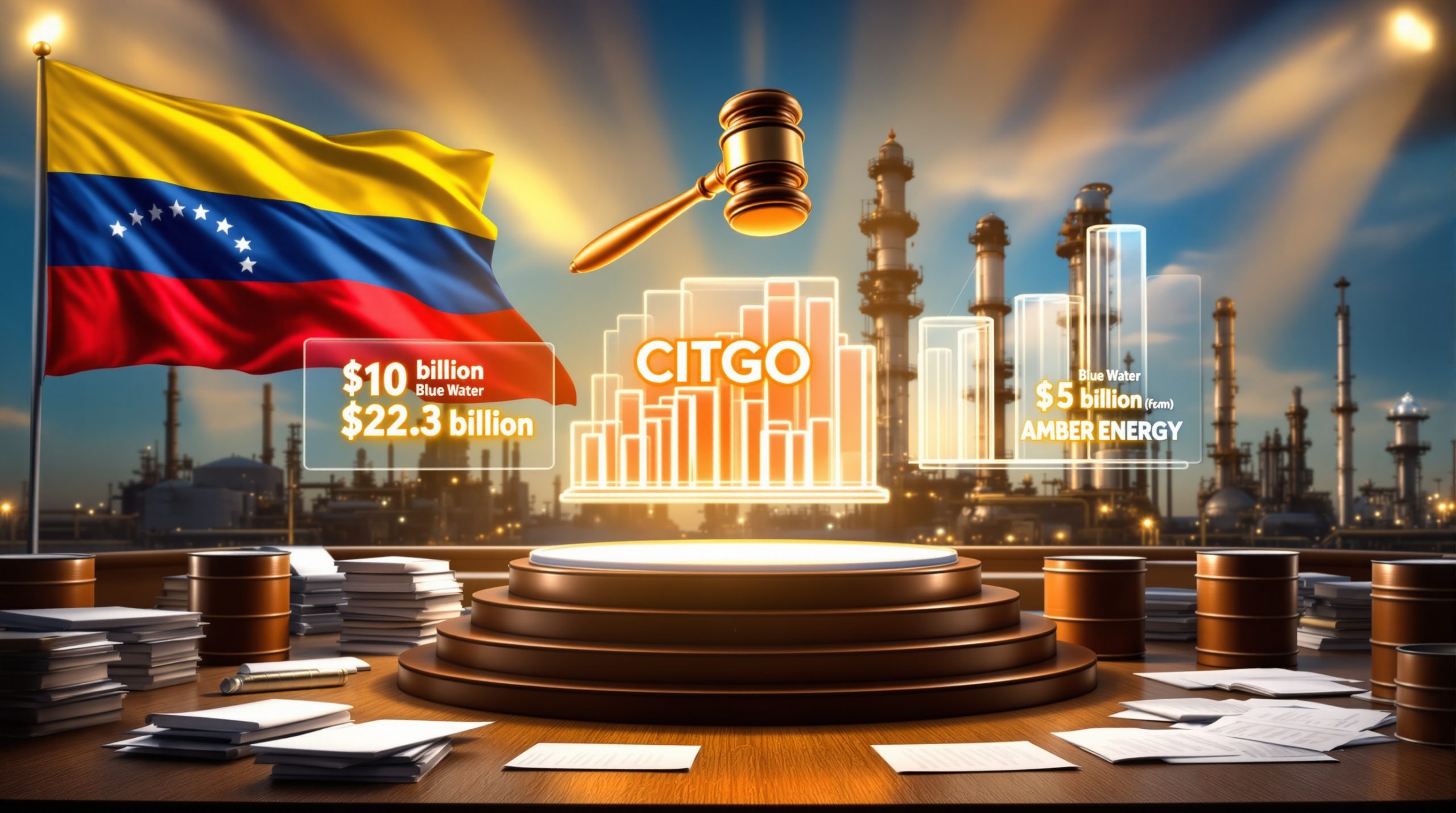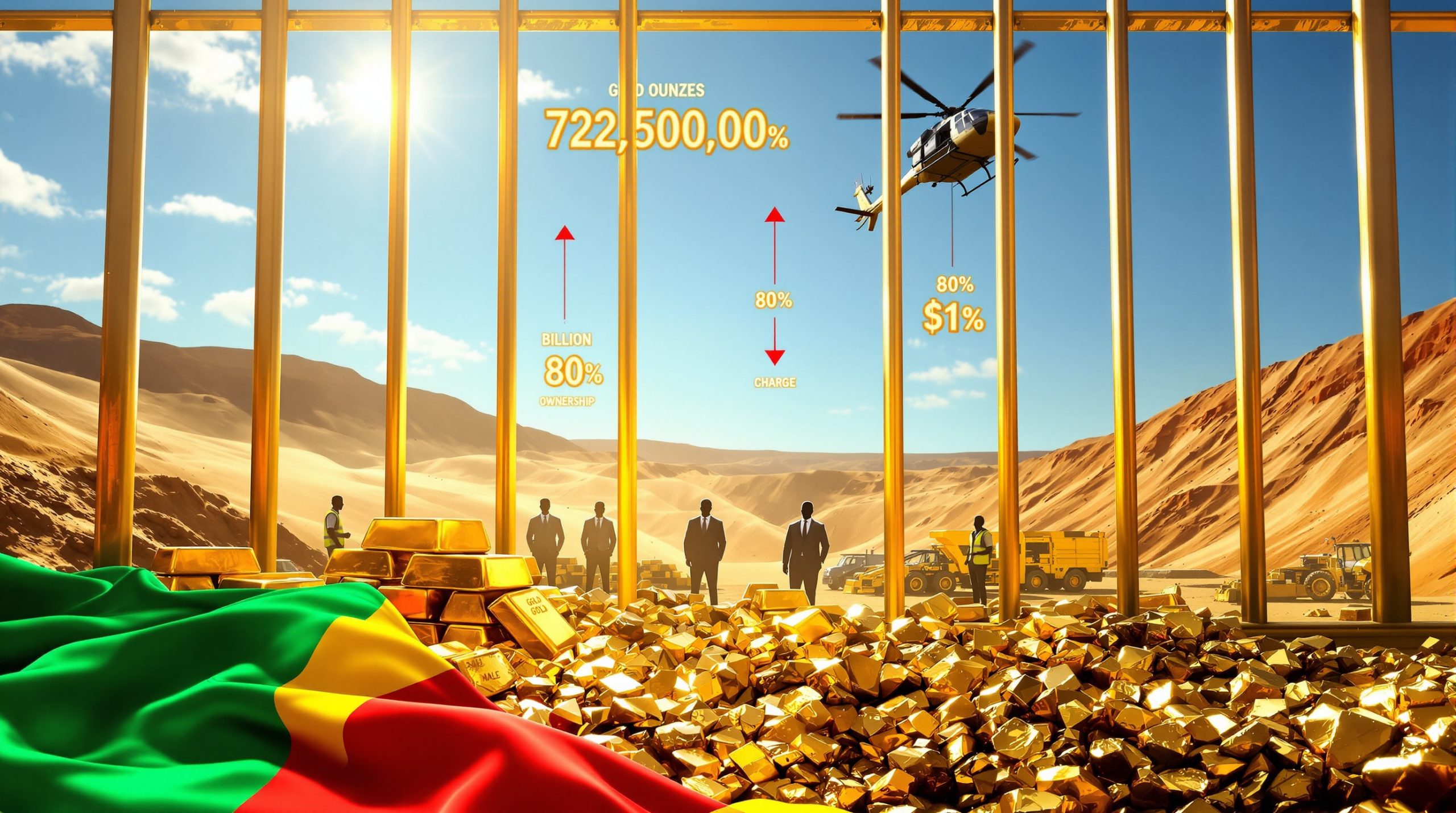Mining for a Sustainable Future: Balancing Resource Extraction with Environmental Stewardship
The Foundation of Everything We Use
Our modern world rests upon the foundation of mining. From the smartphone in your pocket to the vehicle you drive, virtually every manufactured product relies on metals and minerals extracted from the Earth. These raw materials form the backbone of our civilization, enabling technological advancement and economic prosperity.
Even items seemingly unrelated to mining—like food production—depend heavily on the industry. As one mining expert explains, "Absolutely everything uses the products of mining, metals and minerals. The only things that don't have metals and minerals in them are things that are grown like our food." Yet even food production relies on metal equipment for planting, harvesting, processing, and distribution.
This fundamental dependency highlights mining's critical role in sustaining our current standard of living while enabling future innovations.
Critical Resources for the Energy Transition
The global shift toward renewable energy and sustainable technologies paradoxically requires significant increases in mineral extraction. Solar panels demand silver, silicon, and copper; wind turbines need rare earth elements and steel; electric vehicles depend on lithium, cobalt, nickel, and copper.
According to the International Energy Agency, a typical electric vehicle requires six times the mineral inputs of a conventional car, while an onshore wind plant needs nine times more mineral resources than a gas-fired power plant of equivalent capacity. This reality creates what some industry experts call the "mineral intensity paradox"—the critical minerals energy transition requires substantial mining activity.
Copper stands out as particularly crucial for this transition. Its exceptional conductivity makes it irreplaceable in electrical systems, and global demand is projected to outpace supply as electrification accelerates across industries.
Economic Development and Community Support
Mining operations create substantial employment opportunities, particularly in rural and remote regions where other industries may struggle to develop. Beyond direct jobs, mining generates economic activity through extensive supply chains, infrastructure development, and community investment programs.
When managed responsibly, these operations serve as catalysts for regional development. Mining companies increasingly implement structured community benefit agreements that ensure local populations receive tangible advantages from nearby resource extraction.
Disclaimer: Economic benefits vary significantly based on project specifics, regulatory frameworks, and company policies. Communities should engage early in project planning to maximize positive outcomes.
How Has Mining Evolved Toward Sustainability?
Technological Innovations Reducing Environmental Impact
Modern mining bears little resemblance to operations of previous generations. Advanced technologies have dramatically improved resource efficiency while reducing environmental footprints:
- Water management systems now recycle up to 80% of process water at leading operations
- Precision blasting techniques minimize ore dilution and reduce energy requirements
- Electric and hybrid equipment decreases emissions and improves air quality
- Digital twins create virtual replicas of operations for optimization testing
- AI-powered systems continuously adjust processes for maximum efficiency
These innovations represent a fundamental shift in the industry's approach to resource extraction. Rather than maximizing short-term production at any cost, leading companies now optimize for long-term sustainability and resource efficiency. The implementation of AI in mining operations has particularly revolutionized how companies approach sustainability challenges.
Reclamation and Rehabilitation Practices
Contemporary mining plans incorporate comprehensive land rehabilitation strategies from the outset. Progressive reclamation—restoring portions of the site while operations continue elsewhere—has become standard practice at responsible mines.
Successful rehabilitation examples include:
- Former mining sites transformed into public recreation areas
- Restored wetlands with greater biodiversity than pre-mining conditions
- Agricultural land with improved soil conditions
- Wildlife habitats designed to support endangered species
These practices ensure mining's environmental impacts remain temporary rather than permanent. Modern mine reclamation innovations have significantly improved the industry's ability to restore landscapes to productive use after extraction activities conclude.
Stakeholder Engagement and Social License
The concept of "social license to operate" has become as crucial as regulatory permits for sustainable mining operations. This unofficial but essential approval from local communities and broader stakeholders relies on transparent engagement, meaningful consultation, and demonstrated respect.
Mining companies increasingly recognize that community support directly affects project success. Companies that fail to establish this social license face operational disruptions, reputational damage, and potential project failure regardless of mineral resource quality.
Best practices for establishing social license include:
"Early engagement is critical. Communities need to be involved from day one, not as an afterthought once technical planning is complete. This collaborative approach builds trust and ensures local priorities inform project development." — Mining sustainability expert
What Challenges Face the Mining Industry Today?
Permitting and Regulatory Complexities
Obtaining permits for new mining operations involves navigating complex regulatory frameworks that vary significantly across jurisdictions. While countries like Australia, Canada, and the United States have established processes, the timeline from discovery to production has lengthened considerably.
In North America, the permitting process typically takes 7-10 years or longer for major projects. These extended timelines create uncertainty for investment and potentially constrain supply of critical minerals needed for technological advancement.
Regulatory requirements serve essential environmental and social protection functions. However, process inefficiencies rather than stringency often cause the most significant delays. The process of securing mining exploration licences can be particularly challenging in certain jurisdictions, creating barriers to entry for new projects.
Talent Attraction and Workforce Development
The mining sector faces a significant demographic challenge as experienced professionals retire without sufficient new talent entering the industry. Mining education programs at colleges and universities have seen declining enrollment, creating potential skills gaps that threaten operational continuity.
As one industry leader notes, "There's not enough people going into colleges anymore into mining programs, into geology programs, into surveying. We really need to get better. All the big guys, the small guys, all of us together collaboratively."
The industry must reimagine its approach to recruitment by:
- Emphasizing technological innovation and sustainability aspects
- Creating more flexible career pathways
- Improving workplace diversity and inclusion
- Developing partnerships with educational institutions
- Establishing mentorship programs for knowledge transfer
Balancing Production with Environmental Protection
As global ore grades decline, mining operations must process more material to produce the same amount of final product. This fundamental challenge requires innovative approaches to minimize energy consumption, water usage, and waste generation while maintaining economic viability.
Leading companies address this challenge through:
| Approach | Benefit | Implementation Challenge |
|---|---|---|
| Ore sorting technology | Reduces processing volume | Capital investment requirements |
| Renewable energy integration | Lowers carbon footprint | Intermittency management |
| Dry stacking tailings | Decreases water consumption | Higher initial costs |
| Precision extraction | Minimizes waste generation | Technical complexity |
| Modular processing | Optimizes recovery rates | Retrofitting existing operations |
How Are Strategic Minerals Shaping Global Politics?
Critical Minerals for National Security
Governments increasingly recognize that certain minerals—including rare earth elements, lithium, cobalt, and antimony—are essential for defense technologies, renewable energy, and industrial applications. This recognition has elevated mining from a purely economic activity to a matter of national security.
The U.S. Department of Defense maintains a National Defense Stockpile of strategic materials, while other nations have established similar reserves. Critical mineral lists vary by country but typically include:
- Rare earth elements: Essential for precision-guided weapons, night vision, and communications
- Lithium and cobalt: Key components in energy storage systems
- Graphite: Used in batteries and various defense applications
- Antimony: Critical for ammunition and fire retardants
- Platinum group metals: Vital for hydrogen fuel cells and catalytic applications
Supply Chain Vulnerabilities and Reshoring Efforts
The concentration of mineral processing in specific regions has created supply chain vulnerabilities, as demonstrated during recent global disruptions. For many critical minerals, production or processing is dominated by a single country, creating potential bottlenecks and security concerns.
Countries are developing multifaceted approaches to address these vulnerabilities:
- Domestic production incentives: Tax benefits, streamlined permitting, and research funding
- Strategic partnerships: Alliances with resource-rich friendly nations
- Stockpile development: Physical reserves of processed materials
- Recycling initiatives: Recovery programs for end-of-life products
- Investment in alternatives: Research into substitute materials
"The minerals that go into batteries—lithium, cobalt, nickel, graphite—these are all on a similar trajectory as rare earths. Nations are recognizing the strategic importance of securing reliable supply chains for these materials."
Geopolitical Competition for Mineral Resources
Access to mineral deposits has become a focal point of international competition. Nations employ various strategies to secure reliable access to strategic minerals:
- Foreign direct investment: State-backed financing for overseas mining projects
- Resource diplomacy: Building relationships with mineral-rich nations
- Trade policies: Tariffs, export controls, and preferential agreements
- Technology transfer: Sharing extraction and processing expertise
- Infrastructure development: Supporting transportation networks in exchange for resource access
This competition is reshaping global alliances and economic relationships, with mineral resources increasingly influencing diplomatic and military positioning. The resources sector impact extends far beyond immediate economic benefits to include geopolitical considerations.
What Makes a World-Class Mining Project?
Scale and Resource Quality
Exceptional mining projects typically feature substantial mineral endowments that support decades of production. These deposits contain millions of ounces of gold or gold equivalent, hundreds of millions of tons of ore, or other metrics that indicate extraordinary scale.
Industry examples demonstrate the impressive dimensions of world-class deposits:
- Major gold-copper projects boasting "10 million ounces of gold and then another 10 million ounces of gold equivalent in the copper"
- Premium gold deposits containing "40 million ounces at 2 and a quarter grams"
- European discoveries with "10.4 million ounce equivalent of gold"
The grade and metallurgical characteristics of these resources significantly influence economic viability. Higher grades generally translate to lower production costs, reduced environmental footprint, and greater operational flexibility during price downturns.
Operational Longevity and Cycle Resilience
World-class mining operations can sustain production through multiple commodity price cycles, typically spanning 40-50 years or more. This longevity provides stability for investors, employees, and host communities while allowing companies to weather inevitable market fluctuations.
Extended mine life enables:
- Comprehensive environmental planning and progressive rehabilitation
- Meaningful community development initiatives
- Continuous technological improvement
- Workforce development and knowledge transfer
- Regional economic diversification
The ability to operate profitably across commodity price cycles represents a defining characteristic of truly exceptional projects. This resilience stems from robust fundamentals rather than favorable market conditions.
Infrastructure and Accessibility
The location and accessibility of mineral deposits greatly affect development costs and operational efficiency. Proximity to existing infrastructure—including transportation networks, power supplies, and water resources—can substantially improve project economics.
Remote deposits may require significant additional investment but can still be viable if the resource quality is exceptional. Infrastructure considerations include:
- Transportation: Road, rail, port facilities
- Power supply: Grid connection or self-generation capacity
- Water resources: Availability and competing demands
- Communications: Data connectivity for operations
- Workforce access: Proximity to population centers
How Is Technology Transforming Mining Operations?
Automation and Remote Operations
Advanced automation technologies are revolutionizing mining operations, from autonomous haulage systems and drilling equipment to remote operations centers that manage activities from hundreds or thousands of kilometers away.
These innovations provide multiple benefits:
- Enhanced safety: Removing workers from hazardous environments
- Improved productivity: Continuous operation without shift changes
- Operational consistency: Reducing variability in performance
- Reduced carbon footprint: Optimized routing and engine usage
- Access to remote deposits: Enabling development in challenging locations
The transition toward autonomous operations requires significant capital investment and workforce adaptation. Leading companies increasingly view this technological evolution as essential for maintaining competitiveness in a resource-constrained future.
Data Analytics and Predictive Maintenance
Mining companies increasingly leverage big data analytics to optimize operations and predict equipment failures before they occur. Sensors throughout mining operations generate continuous data streams that, when properly analyzed, reveal opportunities for efficiency improvements.
Predictive maintenance applications include:
- Monitoring vibration patterns in crushing equipment
- Analyzing oil contamination in heavy machinery
- Tracking thermal signatures of electrical systems
- Measuring tire pressure and wear patterns in haulage fleets
- Detecting anomalies in processing plant operations
These systems can reduce maintenance costs by 15-25% while extending equipment life and minimizing unplanned downtime—a significant advantage in capital-intensive operations.
Precision Extraction and Processing
Technological advances enable more precise resource targeting, reducing waste rock generation and processing energy requirements. Techniques like ore sorting, selective mining, and advanced processing methods maximize recovery rates while minimizing environmental impacts.
Emerging approaches include:
- Sensor-based sorting: Using optical, X-ray, or electromagnetic sensors to separate ore from waste
- In-situ recovery: Extracting minerals without removing rock through leaching solutions
- Precision blasting: Customizing explosive patterns based on detailed geological models
- Hydrometallurgical processes: Employing water-based extraction to reduce energy consumption
- Bioprocessing: Utilizing microorganisms to extract metals from low-grade ores
What Role Do Mining Companies Play in Community Development?
Local Employment and Skills Development
Responsible mining operations prioritize local hiring and invest in training programs that develop transferable skills. These initiatives create economic opportunities in host communities while building human capital that benefits the broader region.
Effective employment strategies include:
- Training partnerships: Collaborating with educational institutions to develop relevant curricula
- Apprenticeship programs: Providing structured pathways for skill development
- Career progression planning: Creating advancement opportunities for local employees
- Cross-training initiatives: Developing versatile skill sets applicable beyond mining
- Leadership development: Preparing community members for management roles
Infrastructure Investment and Public Services
Mining projects often catalyze infrastructure development that serves both operational needs and community interests. Roads, power systems, water treatment facilities, and telecommunications networks developed for mining operations can provide lasting benefits for local populations.
This infrastructure enables other economic activities and improves quality of life, particularly in remote areas where government investment may be limited. Strategic infrastructure planning can maximize these co-benefits when companies engage with community members and local governments during development.
Community Investment and Partnership Programs
Leading mining companies establish structured community investment programs that address local priorities through collaborative approaches. Rather than imposing predetermined initiatives, successful programs:
- Conduct participatory needs assessments
- Establish community-led governance structures
- Develop transparent decision-making processes
- Create measurable impact indicators
- Implement regular evaluation and adaptation
These programs may support education, healthcare, entrepreneurship, and cultural preservation. The most effective initiatives build local capacity rather than creating dependency, enabling communities to thrive independently of mining operations.
How Can Investors Evaluate Mining Projects?
Resource Quality and Technical Fundamentals
Investors should carefully assess the scale, grade, and metallurgical characteristics of mineral deposits, as these fundamentals ultimately determine project viability. Technical reports prepared according to recognized standards (like NI 43-101 or JORC) provide essential information about resource estimates and development plans.
Key evaluation criteria include:
- Resource size: Total contained metal/mineral and expansion potential
- Grade profile: Average grade and distribution throughout the deposit
- Metallurgical recovery: Percentage of target minerals that can be economically extracted
- Impurities: Presence of deleterious elements that may affect processing
- Mining method suitability: Alignment between deposit characteristics and extraction approach
Jurisdictional Considerations and Permitting Status
The regulatory environment and political stability of host jurisdictions significantly influence project risk profiles. Countries with established mining codes, transparent permitting processes, and respect for property rights typically present lower investment risks.
Investors should consider:
- Permitting timeline: Realistic assessment of approval processes
- Fiscal regime: Taxation, royalties, and potential for unexpected changes
- Environmental requirements: Standards and enforcement mechanisms
- Community relations: Local attitudes toward resource development
- Country risk rating: Political stability and rule of law
While established mining jurisdictions may offer greater certainty, they often feature higher operating costs and more mature resource exploitation. Frontier regions may present higher risks alongside greater upside potential for early movers.
Management Team Experience and Track Record
The experience and demonstrated capabilities of leadership teams strongly correlate with project success. Executives and technical personnel with proven histories of developing similar projects through various market conditions inspire greater investor confidence.
When evaluating management, consider:
- Relevant experience: Previous work with similar deposit types and jurisdictions
- Project delivery history: Track record of bringing projects to production on schedule and budget
- Capital allocation discipline: Demonstrated financial responsibility and shareholder alignment
- Stakeholder management skills: History of effective community and government relations
- Technical expertise: Appropriate specialization for the specific project challenges
What Does the Future of Sustainable Mining Look Like?
Carbon-Neutral Mining Operations
The mining industry is increasingly committed to decarbonization, with companies setting ambitious targets for reducing greenhouse gas emissions. Strategies include electrification of equipment, renewable energy integration, and process optimization.
Pathways to carbon-neutral mining include:
- Renewable energy implementation: Solar, wind, and hydroelectric power generation
- Battery-electric vehicles: Replacing diesel equipment with zero-emission alternatives
- Hydrogen applications: Developing fuel cell technology for heavy equipment
- Energy efficiency improvements: Reducing consumption through optimized processes
- Carbon capture technologies: Removing emissions that cannot be eliminated
Some operations aim to achieve carbon neutrality through
Want to Invest in the Next Major Mineral Discovery?
Stay ahead of the market with Discovery Alert's proprietary Discovery IQ model, delivering instant notifications on significant ASX mineral discoveries and turning complex data into actionable insights. Understand why historic discoveries can generate substantial returns by visiting the dedicated discoveries page and begin your 30-day free trial today.




